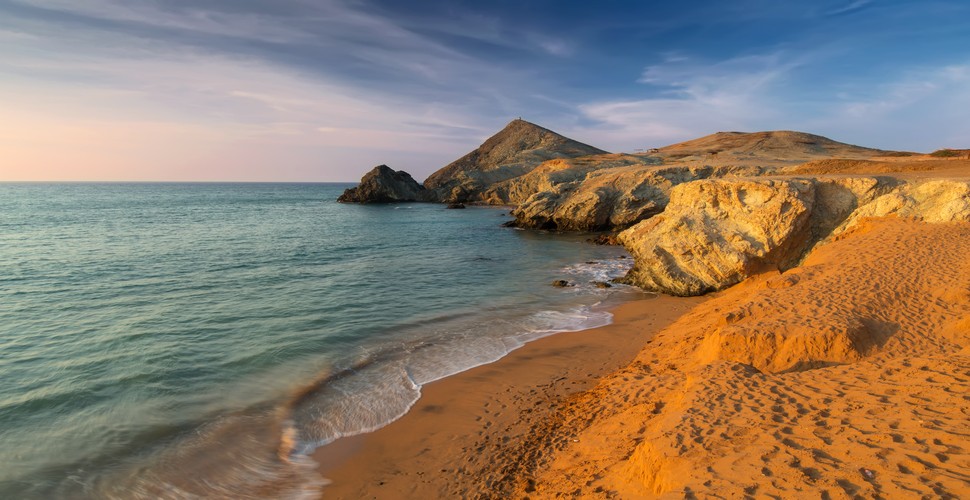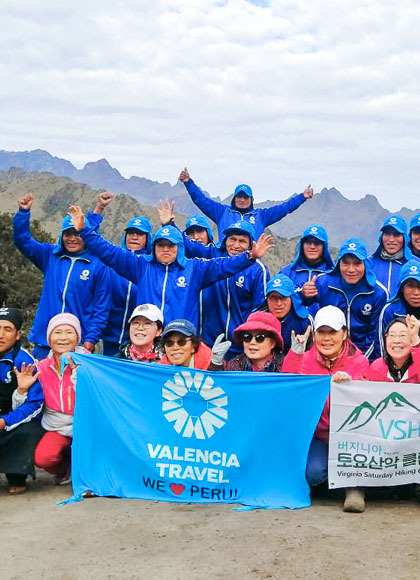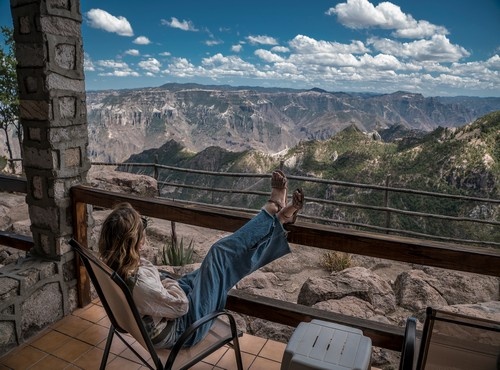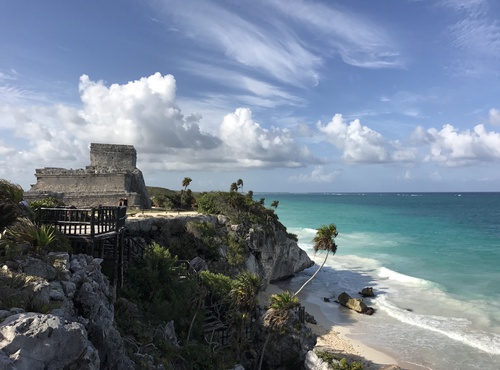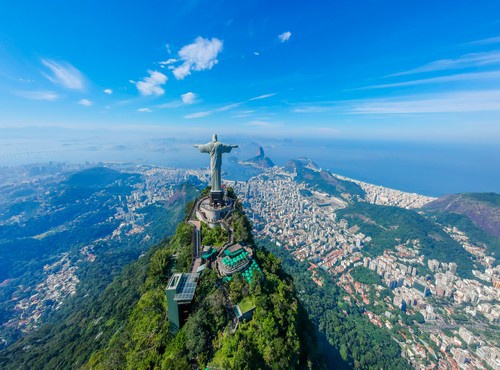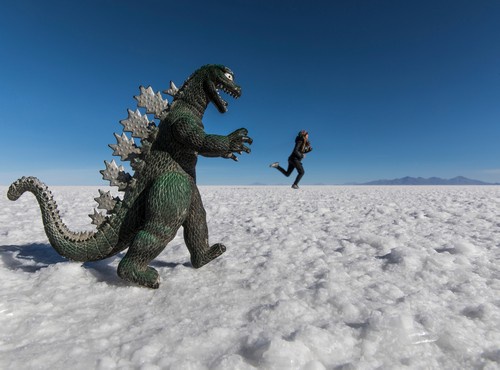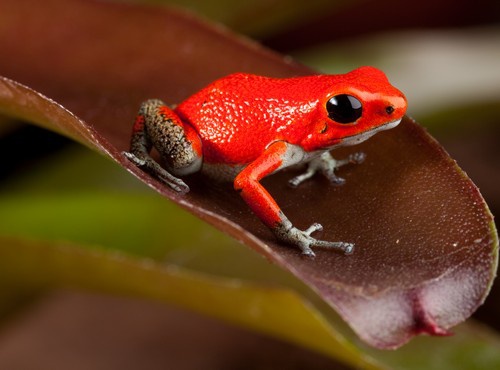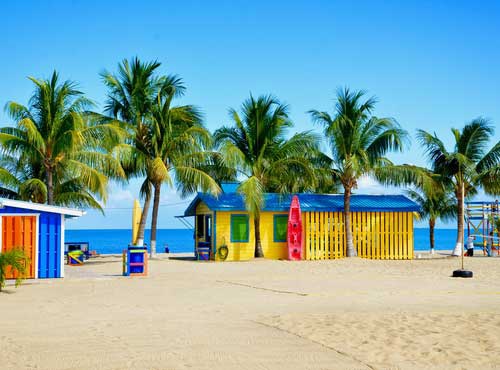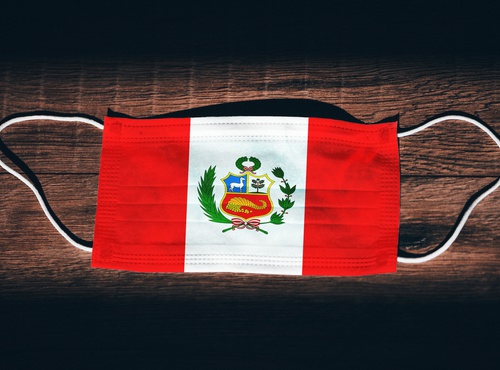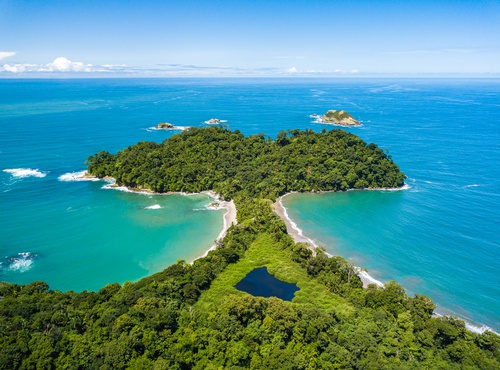
Written by:undefined undefined
Published: 10-05-2023
The Guajira peninsula is surrounded by beautiful and calm blue waters and decorated with spectacularly colorful Wayúu handicrafts, which are an indigenous population that inhabits these exotic lands. The indomitable character and the way of life of the Wayúu is a true reflection of a race that resisted Spanish conquest o their arrival. Ecotourism in La Guajira has outstanding potential for national and international visitors. The natural and cultural attractions of the Wayúu way of life are an indication of the influence of the culture of the Arawak and Carib ancestors, who were characterized by their fierce resistance to the Spanish. blessed with sun, mountains, desert, beach, and unique human potential, this region is different and unexpected in the Caribbean region of Colombia, where reality is fused with fantasy. Visiting La Guajira is an out-of-the-ordinary experience, where you will learn about the perfect harmony between man and his environment. From the settlements of the people who guard the Sierra Nevada de Santa Marta to the Wayúu, who live together in the desert and demonstrate the balanced way in which the Guajiro builds and protects their natural environment. Join us on this Indigenous Colombian cultural adventure to get in touch with Indigenous Colombian Culture.
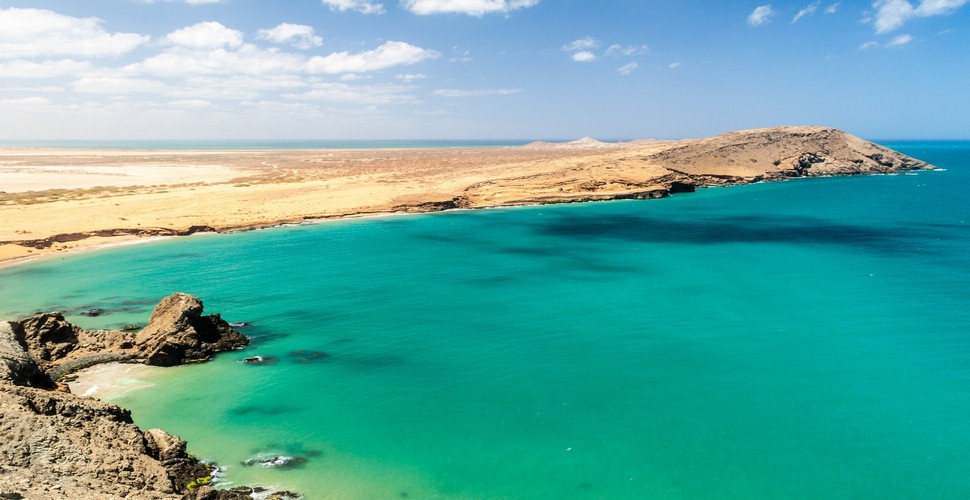
Guajira Peninsula
Riohacha
This large seaside resort is the starting point for a 4×4 trip to La Guajira, a region populated by the Wayuu (or Guajiros), an Amerindian people living mainly from weaving and fishing. Riohacha is a quiet place, perfect for hiking, fishing with the locals, or doing nothing else but enjoying the sun and relaxing on the beach. From Riohacha you will travel through the Guajira Peninsula to the indigenous capital of Colombia, Uribia. This small trading town is the perfect example of the Wayuu culture. Then travel across the magical Carrizal Desert with stunning cacti and wayúu villages along the way until you arrive in Cabo de la Vela.
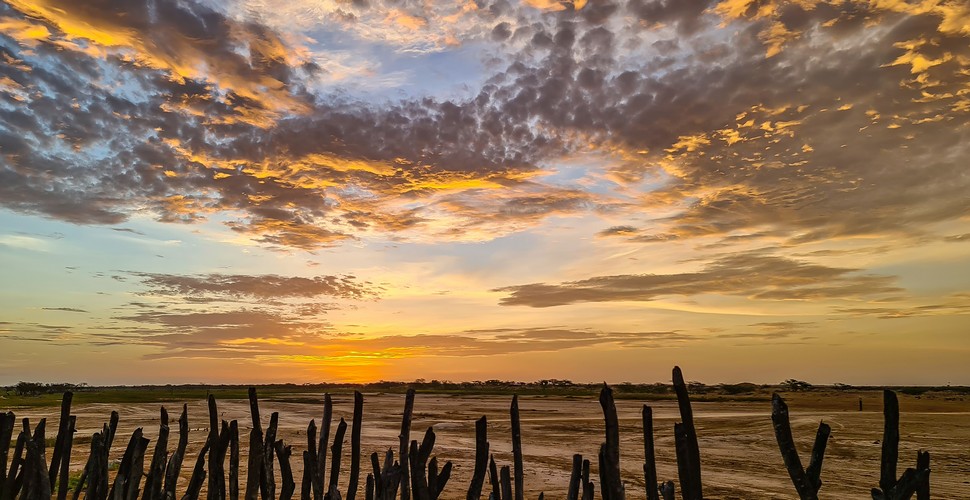
Riohacha
Cabo de La Vela
Cabo de la Vela is literally translated to“Candle Cape” and is a small lively seaside village and a true paradise for kitesurfers and windsurfers. Just 10 minutes away, there is a stunning orange sand beach, bordered by a rocky protrusion called "Pilon de Azucar" from where you can watch a magical sunset. The name Cabo de la Vela was given by Alonso de Ojeda in 1499 when he thought he saw the whiteness of a sail in the distance on the way to the town of Nazareth.
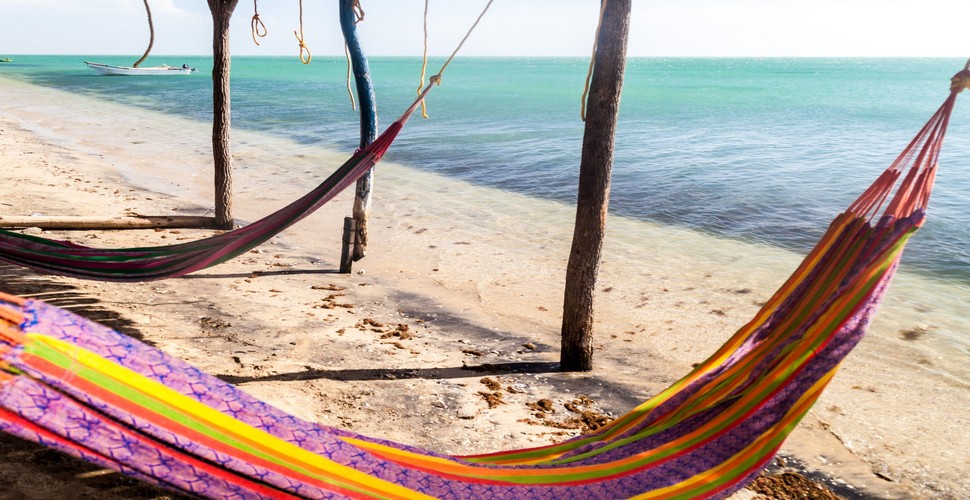
Cabo de la Vela
Nazareth
Nazareth, a curious place to the outside world where they uphold age-old jungle traditions and have wonderful fauna and flora - some of the most varied on the planet. Travelers visit the region to swing with the monkeys, swim with the famed pink dolphins that frolic in the Amazon waters, or to fish for piranhas. Kite surfing s one of the most popular activities in the area with warm temperatures and excellent winds for all different levels of kite surfers. The nearby Macuira is a National Natural Park of Colombia considered an oasis in the desert of Alta Guajira, in the Caribbean region of Colombia. This spectacular park is home to the meeting of the sea, desert, and jungle. The park was declared in 1977 to protect and conserve the Serrania de la Macuira, which reaches 864 meters above sea level. It is not as high as the Sierra Nevada de Santa Marta, but it is special because of the presence of cloud forests very close to the Colombian Caribbean coast and surrounded by a vast desert. Macuira National Natural Park appears as an oasis amid the semi-desert area of the Alta Guajira and it is one of the few mountains in this region. Additionally, it has a unique ecosystem of impressive bird biodiversity.
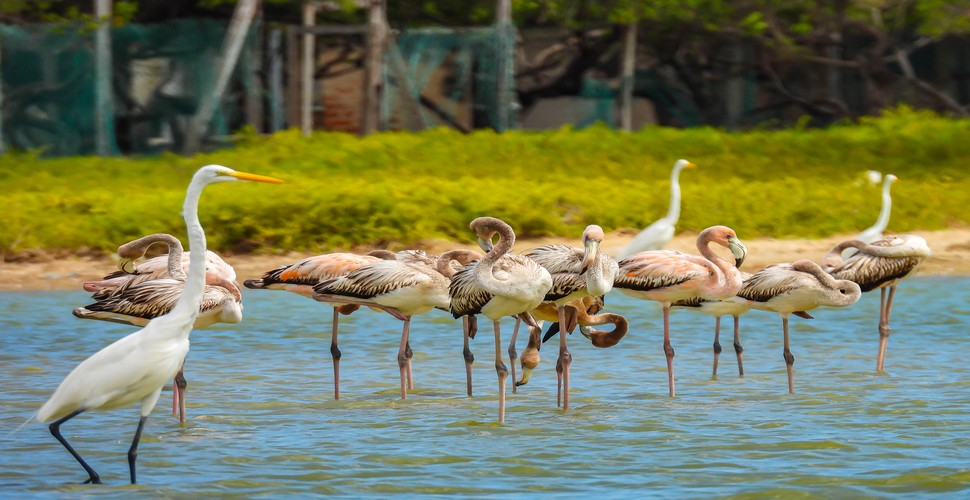
Flamingos in Nazareth
Punta Gallinas
Punta Gallinas, La Guajira, is the northernmost point of South America. This place has invaluable natural prowess as well as close contact with Indigenous culture. Roll down sand dunes and into the waves on secluded Caribbean beaches before enjoying magical sunsets that eventually turn into evening performances of light under star-drenched skies. an opportunity to learn about the customs, traditions, and way of life of the Indigenous Wahúu. During your stay in this place you usually sleep in the rancherías, which are the settlements where they live. The nearby Taroa Dunes are a highlight in Punta Gallinas. It is somewhat exciting to be able to go down the sand with a special board. Also from the dune, you can see the Caribbean Sea. At Bahía Hondita you will observe the mangroves and some species of native birds. Some of the most striking are the pink flamingos. Bahía Honda is a small and quiet beach. where the yellow of the desert is combined with the blue colors of the sea. The lighthouse is the traditional place to take a picture.
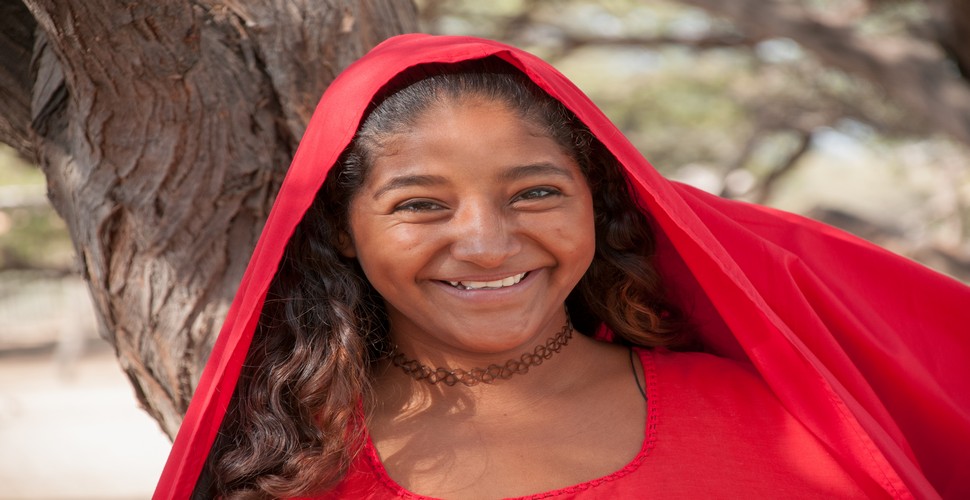
Indigenous Wahúu Woman
Manaure
Manaure is a settlement of indigenous communities, it owes its name to a recognized Cacique of the pre-hispanic era, Manaure fought against the Spanish army, but was assassinated in 1821. This is where Colombia’s most important salt flats are located. The salt mines of Manaure are an attraction of the Guajira since many natives work there, and they are the ones who explain the production procedures. The huge salt flat has 6 different zones in which different processes such as extraction, evaporation, and crystallization are carried out. This salt mine is the main source of income for the communities of Manaure. Spot pink flamingos in their natural habitat and learn all about salt production in Colombia on our day trip to the Manaure Salt Flats and the Los Flamencos Flora and Fauna Sanctuary.
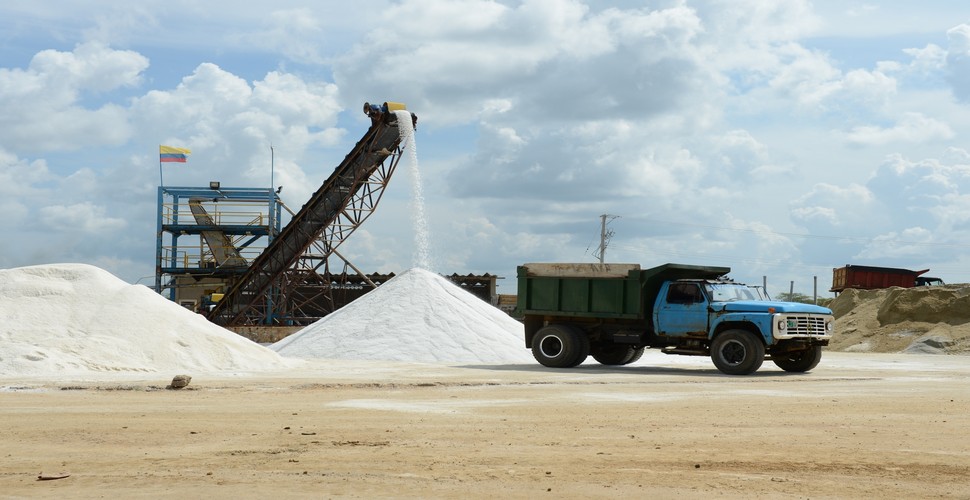
Salt Harvesting in Manaure
If you are interested in Colombian indigenous culture, and fabulous scenery with a diverse set of ecosystems home to endemic animal species, contact us here for more information about this unique off-the-beaten-track part of northern Colombia for the perfect Colombia vacation!
